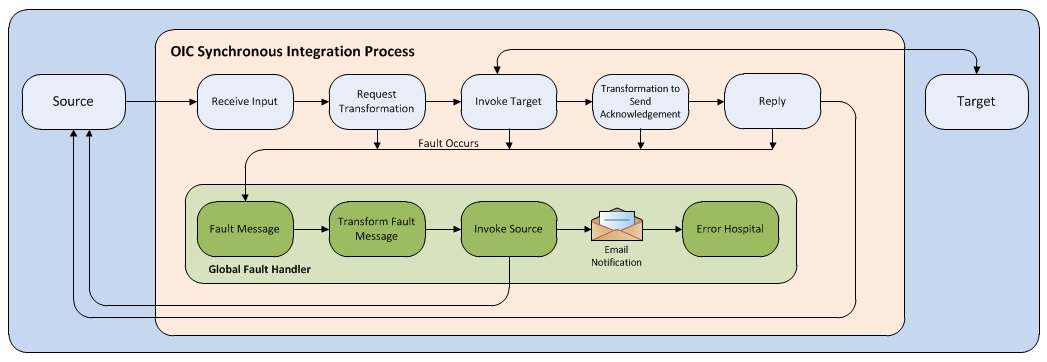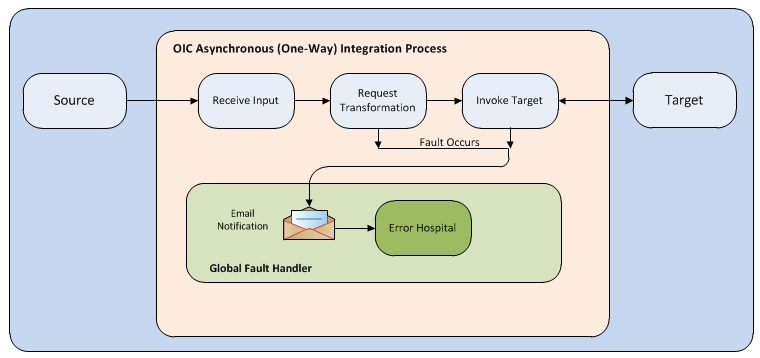Solution Diagram
The technical aspects involved in Oracle Utilities Customer Care and Billing Integration to Oracle Field Service are:
• It is an integration between Oracle Utilities Customer Care and Billing and Oracle Field Service.
• The integration layer is made up of integration processes deployed on Oracle Integration Cloud.
• It uses web services and REST APIs to facilitate communication between these two applications.
• In the Oracle Utilities Customer Care and Billing initiated processes, outbound messages are sent and Oracle Field Service uses REST API to receive the messages.
• In the Oracle Field Service initiated processes, events are triggered and Oracle Utilities Customer Care and Billing uses inbound web services (IWS) to receive the messages.
The integration patterns used in this solution are:
Synchronous
The synchronous integration process:
1. Receives request message from the source application.
2. Transforms the message from source format to the target format. Lookups are used for data translations.
3. Invokes the target application.
4. Transforms the message (after invoking the target application) from the target format back to the source format. It sends back an acknowledgment/synchronous response to the source application.
5. In case of any error, the global fault handler catches them and sends the transformed error message to the source application.
6. An optional email notification is sent to the respective users as configured.
The integration processes using this pattern are:
• Create/Update Activity (Oracle Utilities Customer Care and Billing initiated)
• Cancel Activity (Oracle Utilities Customer Care and Billing initiated)
• Appointment Window Request (Oracle Utilities Customer Care and Billing initiated)
• Device Verification (Oracle Field Service initiated)
• Query Service Point (Oracle Field Service initiated)

One-way Asynchronous
The one-way asynchronous integration process:
1. Receives request message from the source application.
2. Transforms message from the source to the target format. Lookups are used for data translations.
3. Invokes target application to send the request message.
4. In case of any error, the global fault handler catches them.
5. An optional email notification is sent to the respective users as configured.
6. The error instance can be re-submitted from Oracle Integration Cloud. Refer to the Error Handling section in Configuring Lookups, Error Handling, and Email Notifications for more details. 

The integration processes using this pattern are:
• Create Activity (Oracle Field Service initiated)
• Activity Completion/Cancellation (Oracle Field Service initiated)
• Interim Activity Status (Oracle Field Service initiated)